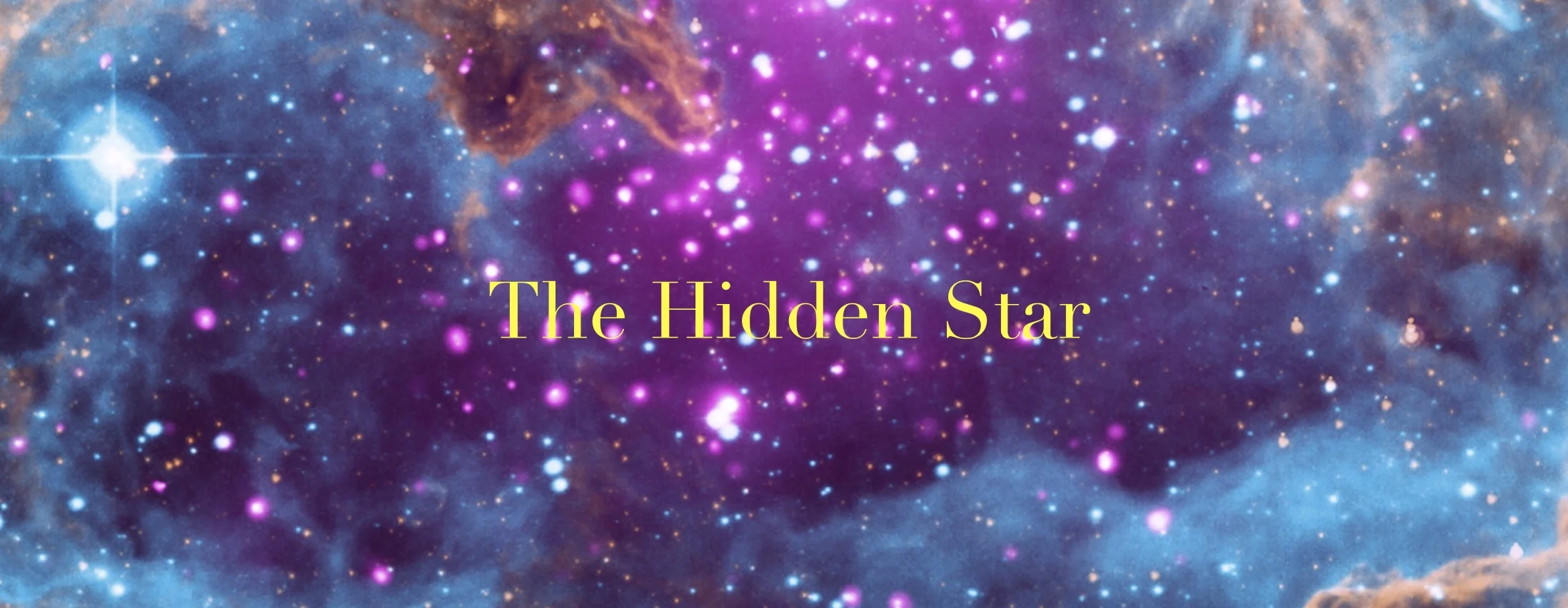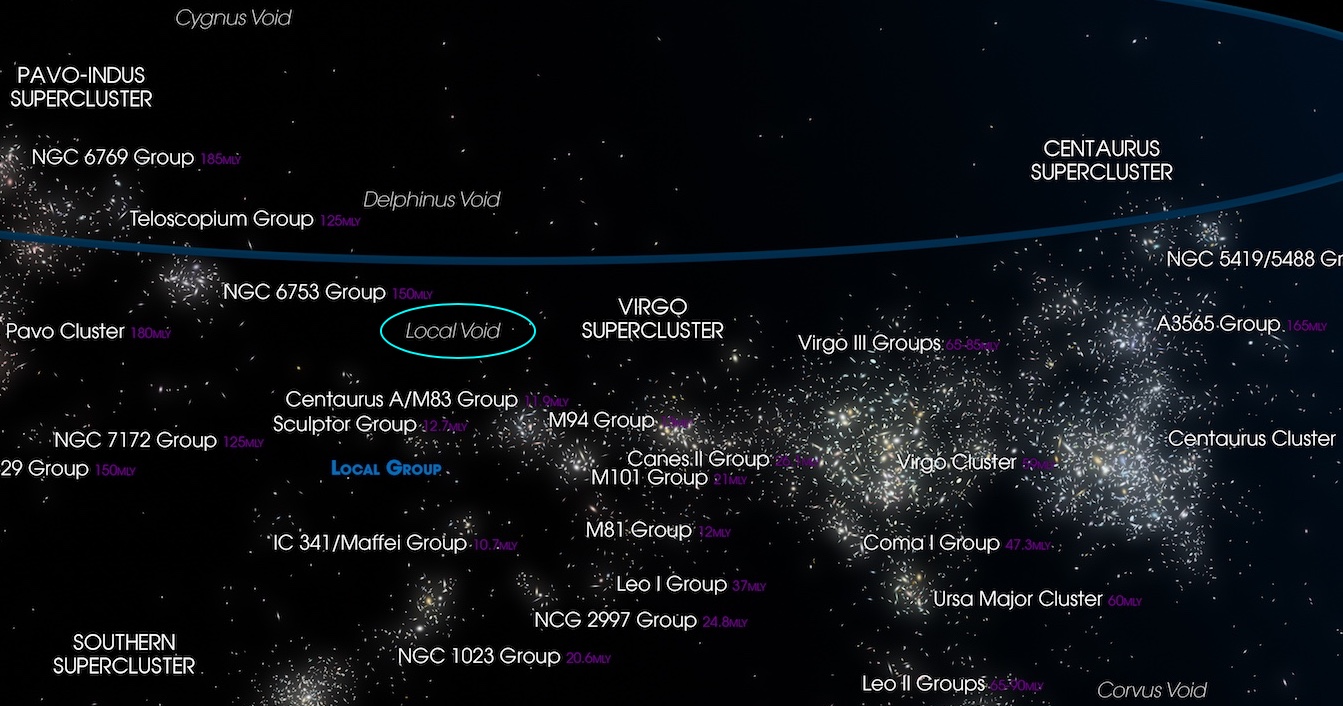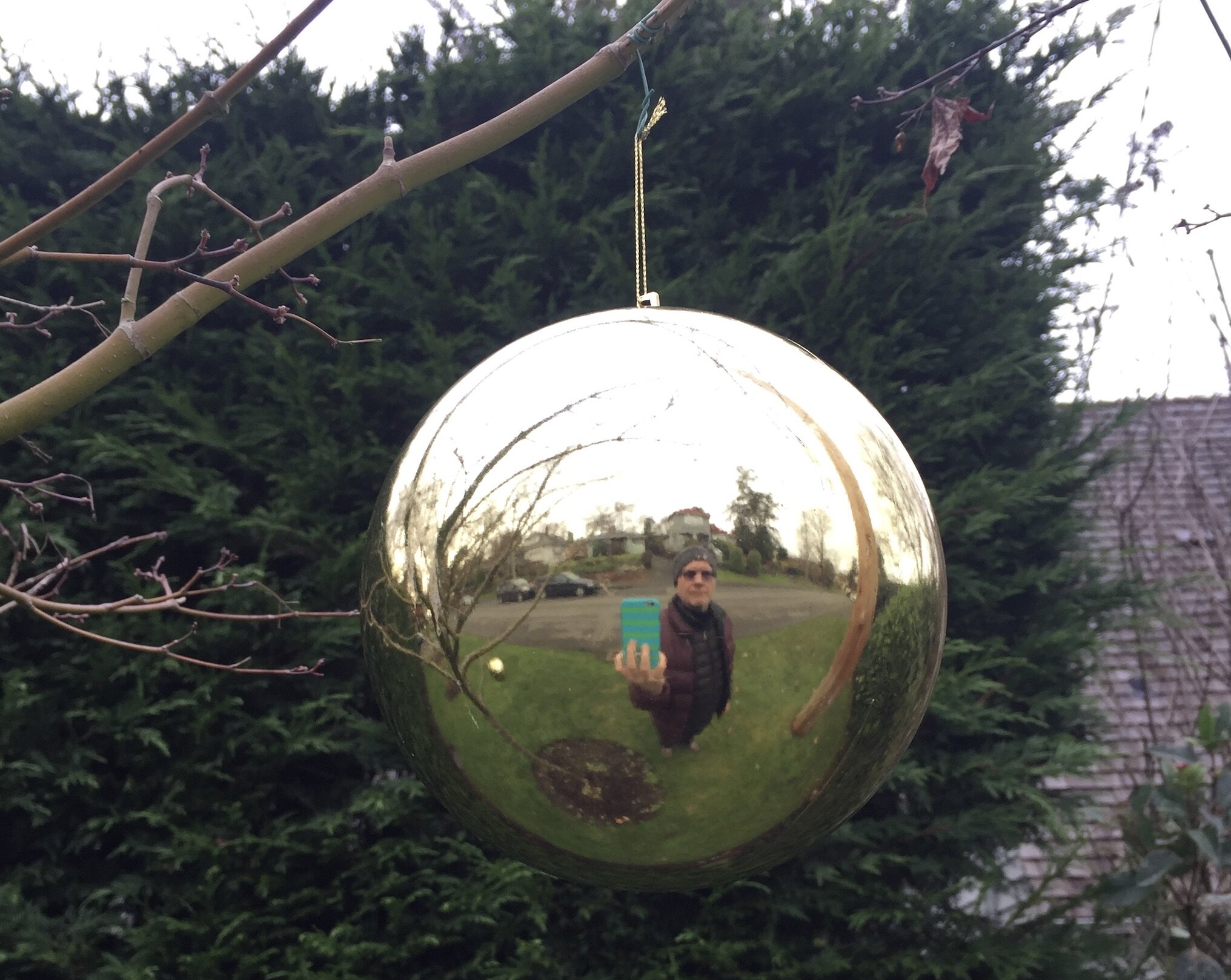The Hidden Star
⭐️
The earliest reference we have to the Soul Star is in The Book of Fractals, written a million years ago by Algotodo, one of the Seven Sages of Vicinese Antiquity. Algotodo doesn’t mention the Soul Star by name, but refers to it as “a heavenly place.” He also says that “It sits at the centre of everything.” Its inhabitants “live under the spell of a cosmic rhythm, at the very juncture of time and eternity.”
Scholars assume that the name Algotodo is fabricated, given that it translates as Some Everything, an apt description of his vague and airy philosophy. For instance, he doesn’t describe the Soul Star in any helpful detail, and he never discloses its exact location:
It rotates slowly, like a diamond sphere lit from within. While it is invisible to the naked eye, endless Ages are infracted in its infinite heart. Silently, slowly, in time and beyond time, it rotates in the silence of eternity.
The rest of The Book of Fractals is equally vague, although Algotodo does give detailed instructions on how to use a fractal orb, and he does supply several entries on the fractal project of the Seven Sages. He writes that the Seven Sages developed algorithms which allowed them to infract human consciousness, and then send it to “a heavenly place.” Six of the Seven Sages died before the project was completed, and Algotodo was left to bring it to completion. Somewhat ominously, he refers to his detonation of “an algonuclear bomb.” These passages have been studied more than the greatest works of the greatest writers in the cosmos.
Yet most of Algotodo’s book is frustratingly vague. It contains statements like, “The seven sages filled the thirteen universes with the seven jewels.” It also contains poems about drumbeats, silences, magic powders, and dust:
❧
Even the mystics meditating on the lofty peaks of Vicino Prossimo have the dickens of a time making sense of Algotodo’s poetry. While the mystics aren’t given to angry outbursts, they’re often heard to utter statements like, Why the hell didn’t he just tell us where the damn Star is? He burned all the scientific data — including the sacred algorithms that built the Star — and then left us to puzzle over his poetry! What a wanker!
⭐️
Astronomers from all over the cosmos speculate that the Soul Star is located deep in the Local Void, which lies next to the Virgo Supercluster of galaxies (within which the Milky Way and Andromeda are located). It’s very difficult to locate the general vicinity of the Star within the changing dimensions of the Void, which has a width of about 60 megaparsecs, or 200 million light-years. In addition, the Star is most likely shielded in some way from the prying eyes of cosmographers — and from the ravaging fangs of the Demon Priests.
Narrowing the Star down to the Local Void was a triumph, one claimed 850 years ago by the wizard nerds of Scientium Fluvius, a floating planet-island in the Pink Sea. Picking up on Algotodo’s tercet, “A death, a line, a narrowed flight, / A new world discovered, / What was wrong, now right,” the Fluvian wizard nerds confirmed that when a being dies it very briefly produces an energy signature (or “line”) which has a specific trajectory (“a narrowed flight”).
Today, the wizard nerds would bet their finest lichen slippers that the Soul Star couldn’t be anywhere near the edges of the Norma or Perseus superclusters, since those lay outside even the loosest of their triangulations. Instead, they maintain that it must lie somewhere between Lacerta, Andromeda, and the Milky Way. The closest Triple A planet is Earth, which is also the closest habitable planet to the astronomical centre of the Kraslika. Some mystics on Earth used to say that Earth sat at the centre of the universe, and later all the scientists laughed at them. But they were right.
The thing that most infuriated the Fluvian astronomers was that all the historical knowledge of the Star came from sources that were so ancient or so vague that they raised as many questions as they answered. In one of these accounts, supplied 86 thousand years ago by the Neptic Dreamers of The Blue Dream universe, a thin purple beam rose from dying bodies. They called this purple beam a neptonymph, and surmised that it travelled forth in search of the First Blue Sea that lay in the blue depths of the Furthest Dream.
Using their most sensitive spectrographs, the Fluvians could see that these purple beams (or waves, or fields, or particles of indeterminate properties) moved in the general direction of the Local Void. Yet because the beams were diffuse and unstable, and because they vanished in a second or two after appearing, the astronomers could only approximate their precise destination.
Other descriptions of the Soul Star were equally problematic. In one account, provided by shape-shifters from The Blue Dream, the Soul Star changed its form depending on who was attempting to locate it. They told the epic tale of one group of brave Dreamers who journeyed into the Local Void and were forced out again. According to the shape-shifters, the Dreamers lacked a belief in the Star and therefore the Star refused to show itself to them. According to another account — by the Mariachi Dreamers of Guamexila, a poor and crowded galaxy on the edges of Dreamland Prime — the inhabitants of the Star constructed a huge wall, skillfully converting the dream energy of the Dreamers into forms of invisible matter which the Dreamers were then unable to penetrate.
According to yet another account — by the poets of the Metaphoric Hoop, a supercluster in the bluest corner of the Blue Dream — the Star didn’t exist at all. It was just a figment of overheated imaginations. It was nothing but a dream, without so much as a capital D. This further confirmed the poets’ belief that everything was ultimately a metaphor and nothing was real. Unhelpfully, they added that only the metaphor of the star was real, and that only the starry dream itself held any value.
⭐️
The astronomers of the Crimson Stalk were keen to study what humans said about Heaven and the afterlife, given that humans were a literate species who lived very close to the Local Void. Several human writers — such as Li Po, Khayyam, Dante, Spenser, and Shakespeare — claimed that Heaven was in the sky, and that love was the magic star that could guide humans to the realm of Eternity. Spenser even proclaimed that he had the power to write someone into the stars: “let baser things devise / To die in dust, but you shall live by fame: / My verse your virtues rare shall eternize, / And in the heavens write your glorious name.”
Not surprisingly, these human writers became famous throughout the Kraslika. Shakespeare eventually achieved a fame that even his fellow human poets could only dream about: the Pink Seamers wrote his name in actual stardust across the nebula of the Dreamy Pink Dream, much to Spenser’s dismay.
Shakespeare was also awarded the highest prize available, the Kraslikan Globe, a glittering emerald crystal that contains over a trillion fractal versions of the finest libraries in the Kraslika. It’s rumoured that in one of these libraries there exists a book containing God’s review of every book ever written, as well as His own definitive treatise, Existentialism & God. The Kraslikan Globe sits to this day in the Temple of Ishtara, in the magical Panophilian city of Borgese, with its cloud-capped towers, its gorgeous palaces, and its solemn temples.
Shakespeare was limited by the technology of his time, yet he nevertheless convinced his contemporaries to use a sextant to find the “the Star to every wandering bark, whose worth’s unknown although its height be taken.” The Crimson Stalkers were, however, at a loss to know how, so many years after Spanish galleons and great ruffled collars, it was possible to take its height. Human sextants were crude things, and only pointed in a general way to things like brawls in port-side taverns.
The Stalkers also noted that the Ancient Greeks believed that famous people became constellations after they died. Yet upon a closer investigation, the Stalkers discovered that the Greeks also thought people could become trees. Later Greeks, influenced by the religion of the Hebrews, believed that one tree grew a fruit that contained a knowledge that doomed the entire human race to eternal suffering. Yet neither the Hebrews nor the Greeks supplied a shred of proof. To make matters worse, the Hebrew stories were borrowed from the Sumerians, who were a dismal lot and didn’t seem to believe that the soul existed in the first place.
⭐️
None of these clues lead to the Soul Star, although humans continued to refer to groups of stars by how they appeared from Earth, thus juxtaposing the farthest and the closest stars. This made a complete mockery of astronomy, which for most of their history humans confused with astrology. As usual, humans saw themselves at the centre of it all — which was in fact true, but that just made it all the more infuriating.
Not that astrology wasn’t a noble field: it had been verified over and over that the structure of the stars had an enormous influence on life-forms. Yet looking at this structure from one point of view — that of Earth — completely distorted the data. How could there be a fixed relation between an imaginary configuration in the sky seen from Earth? Again, the fact that human astrology predicted all sorts of cosmic events was all the more frustrating!
But how could there be a fixed relation when the imaginary configuration was gradually shifting in its relation to Earth? Someone born under the constellation of The Fish in Ancient Babylon would be swimming in the barrel of the Water-Bearer today. At least in this case it’d be a fish in water. Other imaginary figures ended up in barn-yard fights, ram horns interlocked with bull horns, crab claws in lion’s teeth. Yet still humans continued to use grandiose and confusing names for their constellations, such as the Great She-Bear, Horologium, Ophiucus, Telescopium, Canes Venatici, and Triangulum Australe.
⭐️
The Crimson Stalkers felt that the poet Dante Alighieri had a more coherent understanding of the universe. In three long poems, Dante showed how the afterlife contained three sections: Heaven, Hell, and Purgatory. This intrigued the Stalkers, since the Local Void had vast filaments which divided the Void into three parts. The Stalkers called the third nearest the Crimson Stalk Heaven, the one closest to the Copper Tarn Purgatory, and the one closest to the Frozen Skiff Hell.
The Stalkers were also cheered by the human belief that the soul rose from the body after death. It was then guided by a man called Jesus — or more generally by an obscure principle called karma-samsara — into celestial streams or into any number of worlds, including Earth. This account was very optimistic and appeared to be coloured by their rose-tinted glasses and their purple paint brushes. They were, after all, inhabitants of the Violet Hoop.
While the human accounts of the afterlife were fantastical, they explained the energy signatures: if you were good you were beamed to the best third of the Local Void; if you were bad, you were beamed to the worst. The Stalkers tried to correlate the soul’s destination to moral information about individual humans, to see if good humans were beamed to Heaven, while evil humans were beamed to Hell. Thousands of Crimson Stalkers spent their entire careers experimenting and speculating on this divine possibility of cause and effect. Yet ultimately it was all in vain, which they would have realized if only they had read Ecclesiastes. While their speculations were poetic, even sublime, the Stalkers were unable to isolate the exact vectors that the purple light beams took at the moment of death. To their horror, it seemed that good people and evil people were beamed indiscriminately to all corners of Heaven, Purgatory, and Hell. Even more troubling, the Stalkers couldn’t find one iota of proof that the energy patterns were in fact souls, that these souls flew to a great Star that contained all souls, or that such a Star was anywhere to be found.
Sagastalk, the great agnostic philosopher from Stalkhome, summed up the situation in his famous aphorism: You don’t have to believe in it for it to exist, and it doesn’t have to exist because you believe in it.
The co-ordinates of the Soul Star were hard to locate, but the Crimson Stalkers were obstinate. They tried everything suggested by the human poets and scientists. They climbed the highest mountains and ran through the widest fields. They spoke with the tongue of angels and imagined holding the hand of the Devil himself. They focused their finest high-powered lenses on the fleeing soul-beam, in an attempt to see the colours bleed into one. But still the astronomers couldn’t find what they were looking for.
⭐️
The Void-dwellers of Ruumar (a giant lacuna in The Copper Tarn) argued that it would be a gross sacrilege for the Soul Star to take any form whatsoever. The Void itself must be the Star.
Mystics from the Ataari Lok universe took this concept further, arguing that the star could be as small as a pea or as large as the Void itself, but that in either case it danced and spun so quickly that it seemed as if it wasn’t there. The mystics spent considerable time and effort constructing a high-speed, large-lens camera to snap a photograph of the Star in a fraction of a nanosecond. Their aim was to gaze at the wonders of what they called Infinity in Frozen Time. Yet each time their camera zoomed in on the Local Void the lens froze, and all they saw was a violet film that pulsed into purple and then blew up their camera.
In the end, astronomers from all over the Kraslika were forced to conclude that the Soul Star eluded their grasp. It seemed to inspire different species to see it as a projection of their own obsessions. Yet the astronomers were true scientists. They weren’t going to let the dearth of facts stop them from finding what may or may not be the truth.
⭐️
Next: ⭐️ Djàdao
Contents - Characters - Glossary: A-F∙G-Z - Maps - Storylines









